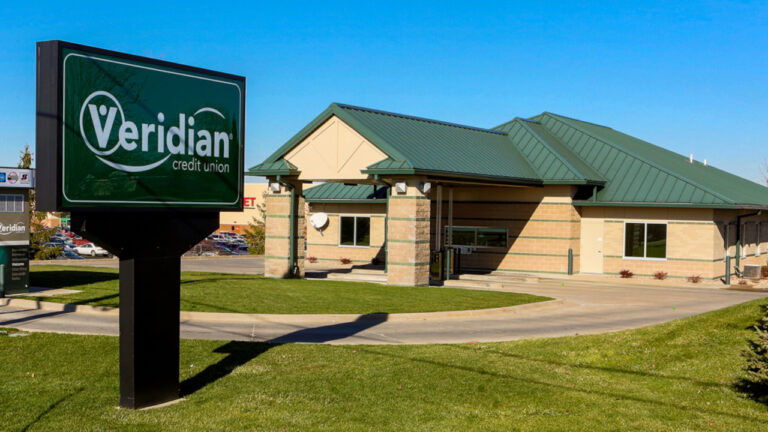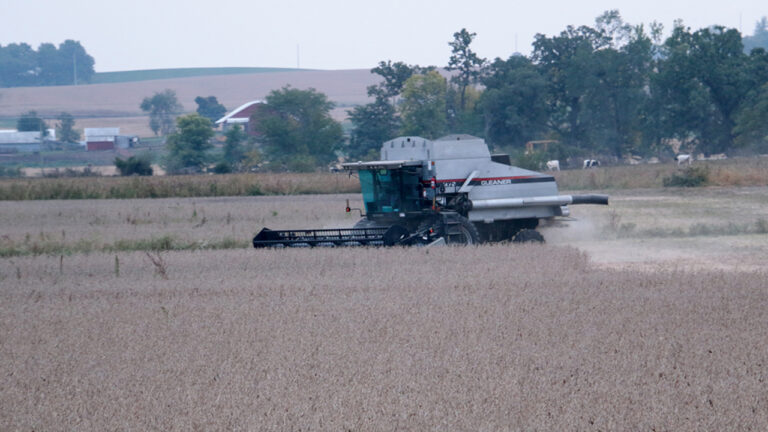By Cindy Hadish
CEDAR RAPIDS – Newly opened clothing boutique, the blonde & the brunette, oozes ultra-modern chic, but shares its future with the past.
The sleek black-and-white addition partially wraps around a more than century-old house in the Czech Village/New Bohemia Main Street District, exemplifying the type of development encouraged with the completion of a new revitalization plan, said Jennifer Pruden, the district’s executive director.
“One of the Main Street tenets is historic preservation,” Ms. Pruden said, noting that the strategic plan was created to help guide development, while preserving the district’s unique architectural assets. “(the blonde & the brunette) does meet those principles. We don’t necessarily want any new building to look like it was here from the beginning.”
The clothing store, at 1000 Third St. SE, Ste. 2, is one of a growing number of new businesses in the burgeoning district, a 40-square-block area that stretches across the Cedar River from southwest to southeast Cedar Rapids.
Gregory’s Antiques, Two Jennifers jewelry store and photo studios are among the businesses to recently relocate or newly open, while restaurants and the forthcoming Lion Bridge Brewing Co. are in the works.
Ms. Pruden, who presented the revitalization strategy to the Cedar Rapids city council’s development committee last month, points to the plan as a road map for the area’s future growth. Facilitated by OPN Architects, the plan has been in progress for more than a year, with suggestions and opinions provided through more than 500 surveys and two open houses.
“We received an extensive amount of public input throughout the process,” Ms. Pruden said, adding that the work also involved demographics and market research.
That research helped define where people spend their money and identified the types of businesses Main Street can target to move into the district. Retail, Ms. Pruden said, is the No. 1 component missing in the district, and while a number of dining options already exist, the study showed room for more.
“We’re kind of creating a restaurant destination,” she said, citing “light-service” restaurants with quicker menu options as one area of need.
Main Street has no intention of recruiting any chain stores to fill the retail gap, but will identify small shops that already have a proven track record, with an established identity and quality merchandise, Ms. Pruden said.
Business development is just one portion of the revitalization strategy for the district, bounded by Eighth Avenue SE, the former Union Pacific railroad line and former Sinclair site on the east side of the river and three blocks centered on 16th Avenue SW from First Street SW to the river on the west.
Czech Village and New Bohemia received Main Street designation in 2009, after both neighborhoods – with their shared history of Czech/Bohemian settlement – were nearly devastated by the 2008 floods.
Main Street, a national economic development/historic preservation model now used in about 50 sites in Iowa, was used to breathe economic life into the flooded district.
Building demolitions followed the natural disaster, leaving swaths of empty lots, but at the same time, independent businesses and cultural assets, such as CSPS Hall, the African American Museum of Iowa and the National Czech & Slovak Museum & Library were restored and revitalized.
“As investors rush to capitalize on the mix of attractions and open land in the area, the district is faced with the challenges that accompany rapid growth,” the revitalization report notes. “Namely, how to guide investment in ways that will complement the area’s established identity while embracing growth.”
Ms. Pruden noted that design standards in the city’s overlay district ordinance should prevent construction of out-of-scale, out-of-context buildings.
Still, as private demolitions continue beyond the city’s property buyout program, which razed more than 1,000 homes and businesses throughout Cedar Rapids, some are concerned about what will happen with the vacant land.
Foremost among those are the former Sinclair meatpacking plant site and, though technically outside of the Main Street boundaries, the neighborhood next to Czech Village, where nearly every home was demolished after the flood, leaving acres of empty land.
An idea to use the nearly 30-acre Sinclair site for recreational fields fell somewhat flat with the council’s development committee.
More than half of the acreage will be dedicated to flood protection and would be flooded during high water levels, but the revitalization plan cited an immediate potential for baseball, softball and soccer fields, a disc golf course and temporary event grounds for seasonal camping or festivals to attract new visitors.
“We still haven’t figured out the Sinclair property,” Councilor Monica Vernon said, “whether that will be a park or to put something in the back to bring in tax dollars.”
Ms. Vernon agreed that flood protection should be provided for both sides of the river, with funding still a key issue.
The report suggests converting the decommissioned rail spur behind the Cherry Building to a trail, with a perhaps more contentious idea of reconstructing a bridge for non-motorized use. Using the river as a recreation venue is another idea floated in the plan, with suggestions for a canoe and kayak launching area from Sokol Park for river access and renting equipment, such as paddle boats. The plan also echoes both neighborhoods’ origins, with a call for more residential living above or near commercial buildings.
Ms. Pruden cited a need for more residential space, along with connections and gateways to define the district.
Built in 1910, the Dostal House, next to the blonde & the brunette, is an example of housing constructed alongside businesses in the Bohemian Commercial Historic District, commonly referred to as New Bohemia.
Lijun Chadima, who owns the neighboring Cherry Building with her husband, David Chadima, saved the flooded two-story Dostal House. She noted that the entire main level was gutted after the flood, while the second-level was unaffected and the limestone foundation survived.
The Chadimas sold the house, named after its original owners, to Dennis Henderson last year.
A Cedar Rapids native, Mr. Henderson, president and CEO of Ready Wireless in Hiawatha, said demolition would have been the simple choice when it became apparent that the clothing store would not work in the home’s footprint.
He knew that the house was a contributing structure to the historic district, however, and worked to save it, while building the 1,500-square-foot addition. A separate business will open in the Dostal House early next year, he said.
Meanwhile, Meegan Hofmeister and Sarah Penney are opening the blonde & the brunette for customers looking for upscale, trendy clothing lines.
“There’s a lot of energy and a lot of momentum here,” Ms. Hofmeister said of the district. “The growth potential is amazing.”
Main Street’s Ms. Pruden said the revitalization plan is one way to capture that momentum.
“It’s a way for people to be excited and know there is a plan for this area,” she said. “That it eventually will come back, and we’re listening.”








